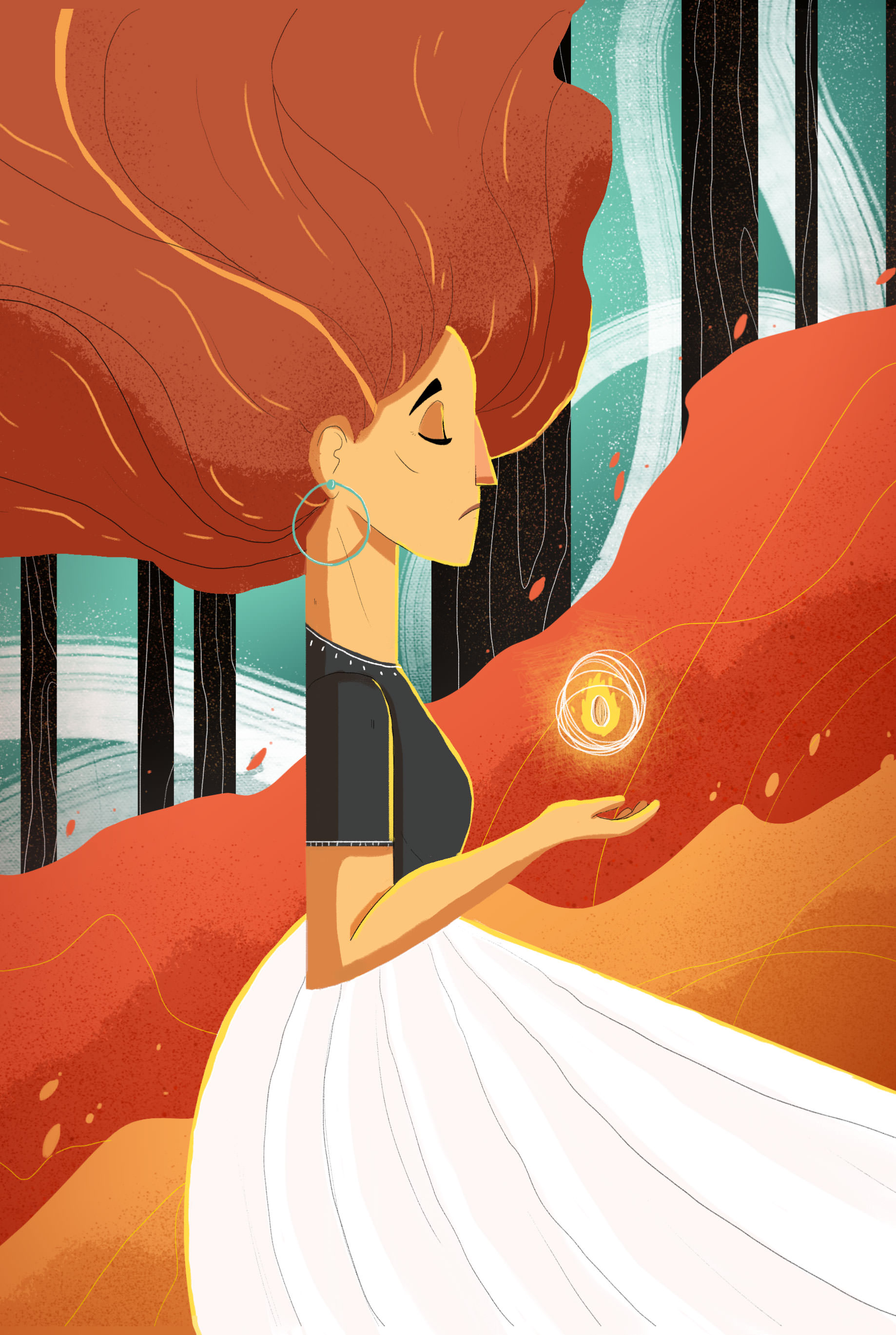
“There are some seeds that open and grow only when a fire releases them.”
I came across this line in the book “The Cultivated Life”, and it moved me. The author described a forest after a wildfire, with trees leveled down to charred stumps and dead branches, and then, suddenly, a green shoot peeks out from the ashes. Yes, some seeds only open up in destruction. But until that flash of color, death is present — acute and chronic pain, grief, desolation.
The quote reminds me to reimagine hope, through my own season of destruction, when I see neither visible signs of new life now nor a future worth all the death and suffering that came before. A particular hope that opens up to the Presence only through losing, mourning, and sitting in silence.
Communal Pain
All throughout 2015 and 2016, hashtags of names poured daily into my inboxes, Facebook feed, overheard BART conversations, everywhere. The Black Lives Matter movement, more than any other time in the past, challenged and demanded a response of my faith. With my relatively diverse church’s fumbling conversations about race, I decided to take the initiative and propose a working group to explore justice and the gospel.
Now, my worshipping community has been a transformative space for me, full of members who spent over a decade following God’s call in the city of Berkeley. I first encountered God here as a healer both of body and soul, hearing of people’s redeemed relationships with family members and witnessing physical ailments disappearing under the hands of praying friends.

In sharing life with this community, I internalized a belief that we overcome in this life by declaring the power of the resurrected Jesus. My first response when faced with hardship or pain has been intercessory prayer. Oftentimes this looks like praying our desired outcomes to God, commanding our souls to shift our gaze from problems toward thanksgiving. Hope, defined in this context, is a joyful expectation of God’s goodness. I am a product of this triumphant theology.
However, through many months of conversations with my pastors in preparation for the justice and gospel group, what emerged was a subtle divergence over where the emphasis should land in the story of the cross: Was I ultimately going to talk about hope in resurrection power when confronting racism and violence against people of color? Or in the name of justice, would I give more weight to historical and contemporary sufferings, possibly jeopardizing the ability to hope? I realized that everything depended upon one question: How are we defining hope?
The more honestly I approached Jesus with my inner turmoil, the more I found myself increasingly unsatisfied with the existing definition of hope. Our default inclination toward “overcoming” left me speechless when the incessant racist brutality hit my friends in the Black community time and time again. I began to suspect the hope I’d been taught — with the emphasis on Jesus’ empty tomb signaling that we His disciples also “move on” — was inadequate in the face of still-present death.
What helped during those months was simple acknowledgment of this shared pain with others — believers and nonbelievers alike — who seemed to carry this suspicion, too. Hope was not to be insisted upon. These friends not only let me cry, but also affirmed the full spectrum of my tormented emotions.
We spoke of holding ourselves close, and they actually held me through sobs; we sent each other angry music, songs of lament filled with expletives yet insufficient in channeling our collective rage; we kept vigils, sat through silence, read poems, and wrote out names of the Black boys and girls and men and women who died at the hands of law enforcement.
I did not know then, as I do now, that this practice of lament was hope of another kind. What the previous definition might name as despair, thereby in need of “shifting”, actually spoke of God not despite continuing terrors, but because of them. This lamenting expressed hope that does not transcend the pain but is intimately in the middle of it as Jesus suffered with those who suffered unjustly. I had yet to learn that hope, embodied in mourning, did not demand that I look past or beyond suffering, but fully experience it.
Proximate Pain
That summer, my dearest friend in the same church community learned her dad fell out of remission of the cancer that we’d thought he had beat. One evening, he passed.
I didn’t know how to comfort my friend. I flew down to SoCal and I tried, inadequately, but with all sincerity, to just show up, literally be there in person next to my friend as she grieved. I took her out to eat in Koreatown to explore the streets, drove around to find donuts, and talked about nothing. Occasionally, she cried and I cried, too. I didn’t know how healing could be present in that context, what consolation for the pain would look like, whether it was even appropriate to speak of hope.

In the weeks and months following, my friend would face having to interpret the conflicting realities for herself: one of the God who makes all things work out for good and who heals all our diseases and one of the God in the midst of her father’s passing. As I witnessed consoling gestures and prayers from our well-meaning Christian friends, I sensed another creeping suspicion.
The gestures and prayers all tended to insist, however gently, however subtly, that she look to the resurrected Jesus. It was the same internalized logic of overcoming grief and pain and suffering. Shift your eyes from mourning to trusting, says the logic, we are to hope, not despair. But what was hope in the midst of unanswered prayers? Of God’s will not done? In the sea of “I’m so sorry’s” and “We’ll pray for you’s”, what did these words mean anyway?
My friend, in her own brave and vulnerable way, continued to show up in spaces of communal worship to question, to share, sometimes crying and angry, other times closed up and tired. By confessing that she didn’t know how to hold both what she had believed about healing and the opposite outcome, and that this incomplete reality disrupted her worshipping in the same way at church, she opened up for me the space before the resurrection.
Something I saw in her told me of hope unafraid of engaging God in silence, the three days in the grave, the full recognition of pain regardless of what comes after. She taught me that this space deserved attention we had not given it because God must be present, though contradictory, without answers, incomprehensible, without putting a demand that the resurrection take place by the time we finish this worship song. Her perseverance was a hope without a concrete resurrected body to anchor His goodness.
Personal Pain
That fall, with a little more command over the vocabulary of redefining hope, I experienced my own loss of a budding romantic relationship with J. It tasted of a homesickness that never quite dissipated since my family had immigrated to the States in 1998. Symptoms of a prior depression returned: I lost appetite for everything. I couldn’t keep up with what day or time it was. I stopped showing up to things, unable to get out of bed on some days. I longed for a home I couldn’t find anywhere on a map. There was only one prayer I could muster: Help.
In the months following, I took many steps to deal with the pain. My counseling sessions allowed me to reach further back in time than this one heartbreak and process more layers of loss — leaving my 10-year-old world and finding myself assimilated in a culture that likes to remind me this isn’t my home. That time heals all things is not quite true. Grief is iterative. It comes in waves. With every peeling and discarding, I find myself less and less convinced of the kind of hope that is tied to any particular outcome. To follow His heart doesn’t always mean I get my longings satisfied or all my desires fulfilled. And I don’t think it’s hopelessness to say God does not always deliver us out of our depressive cycles.
The three pain points — the communal, the proximate, the personal — slowly yet unflinchingly have chipped away a false notion that hope only means an excited outlook on the future when all evil is resolved and good comes my way. Hope, deconstructed and reimagined, falls outside the confines of the triumphant gospel I’ve known and stands alongside lamentation, rooted in the rich history of the Black church that identifies with the suffering Jesus. It doesn’t insist that God instantaneously take away what years of therapy cannot, but extends to my friend who’s doing her best to face the God who is silent at her dad’s grave.
It comforts me, not with God’s promises over my family’s past and future, but with the knowledge that He sees me weep the absence of someone who is no longer in my life. This hope — cloaked in mystery, through the dark nights of the soul, in full agony and communion with the one who knows, truly knows — looks more fragile to some than my previous definition. But it’s my seed that opened after the forest fire.
I still see Jesus on the cross at weekly masses as I lift up the names of Black brothers and sisters — not in front of the empty tomb yet. The three days feel like forever as I think about my friend and her waves of grief, and the green shoots I’m looking for may or may not come. I remember J. I hold my seed, and I continue to sit at the foot of the cross.

Hatty Lee cut her teeth on organizing at UC Berkeley to disaggregate Asian American student data and to establish a permanent home for the Multicultural Community Center. She learned from the most amazing folks while organizing tenants in the Tenderloin for affordable housing, healthcare, and community governance. Her love for Jesus and her peoples has taken her from a full-time ministry in Berkeley to neighboring in Seoul, throwing down with an anti-Trump PAC, and then to decolonial theologies, with doctoral work in Ancient Near East and the Hebrew Bible in view. Her research interests include folklore, trauma narratives, ritual studies, and diasporas in the HB. She believes in coffee, hosting Zoom communions, and sharing Netflix & HBOMAX accounts. You will most likely find her in the Yale Divinity School library or her advisor's office hours.

Ivan Blanco is a Filipino American, Los Angeles-based illustrator and designer. He loves listening to people’s unique stories and telling his own through his work. He aims to use art as a platform to hear, share, and honor all stories especially ones that feel untold. See more of his work at ivanblancoart.com or through Instagram @ivanb511.